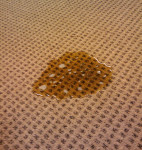 Life is messy, life with pets even more so. Accidents happen, and litter boxes get missed. In fact, this is one of the top reasons cats are abused and relinquished to rescues and shelters (and ultimately killed). It doesn’t need to be this way, however. We know so much more about feline behaviors and needs today, and understanding and correcting litter box elimination problems is easier than it’s ever been before. (CatCentric will have a page devoted to this topic soon!)
Life is messy, life with pets even more so. Accidents happen, and litter boxes get missed. In fact, this is one of the top reasons cats are abused and relinquished to rescues and shelters (and ultimately killed). It doesn’t need to be this way, however. We know so much more about feline behaviors and needs today, and understanding and correcting litter box elimination problems is easier than it’s ever been before. (CatCentric will have a page devoted to this topic soon!)
Addressing the root cause of litter box issues is critical to correcting them, of course, but properly cleaning the urine is essential to ensuring the behavior doesn’t get repeated even after that initial cause has been remedied. It may seem a daunting task, but Laurie Goldstein is back to help you in CatCentric’s newest article: “How to Remove Cat Urine: Why an Enzyme Cleaner must be used.”
- Recommendations for home-made formulas to clean cat urine stains are widely circulated on the Internet, and typically include some combination of vinegar, hydrogen peroxide and baking soda. Of course, many people unfamiliar with the problem of cleaning cat urine stains simply try to clean up cat pee as they would any other stain, only to find out later it didn’t work. In fact, using traditional household cleaners on cat urine actually “sets” the stain. This makes the stain even more difficult to remove with proper enzyme cleaners.
There is a strong, legitimate, and chemically important reason to use an enzyme cleaner to clean cat urine stains. Home-made mixtures or typical household cleaners simply do not contain the required ingredients to remove ALL the components of cat urine. Vinegar and baking soda work to neutralize the odor temporarily, and hydrogen peroxide is 30% more oxidizing than chlorine. But cat urine is composed of things that REQUIRE enzymes to break down the chemical bonds.
So go ahead, roll up your sleeves, get out that black light, and get to work removing your cat’s little mistakes!

